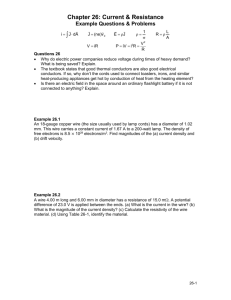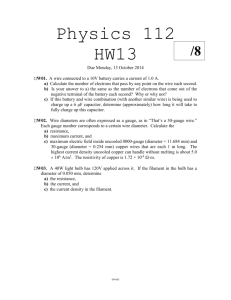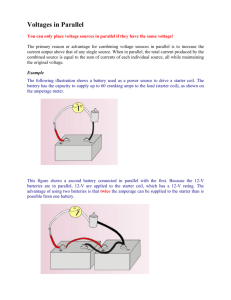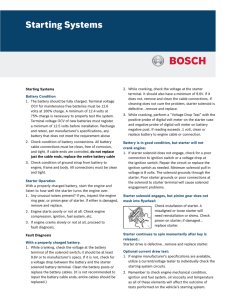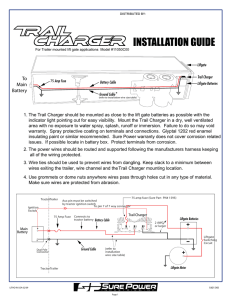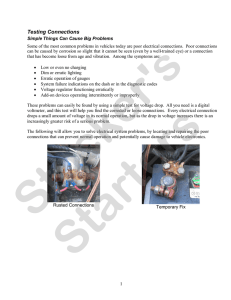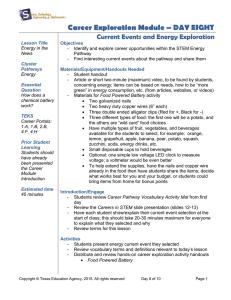Battery internal resistance and wire resistance. MJM ... My 1960 Mercedes 190b had a 1.6 liter engine
advertisement
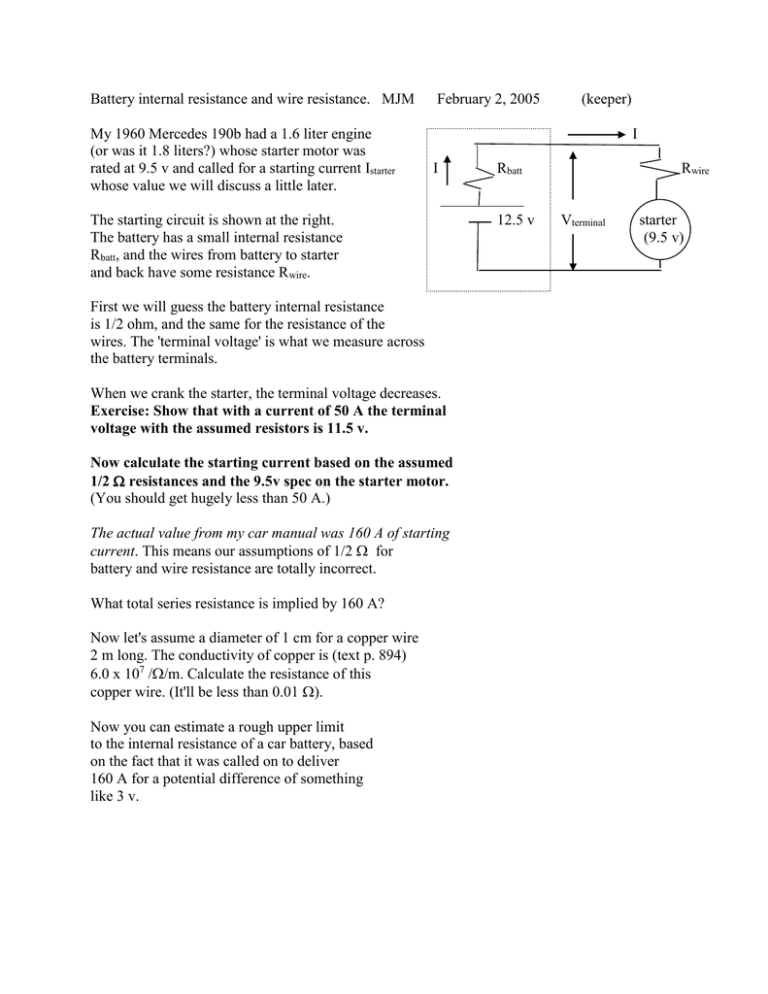
Battery internal resistance and wire resistance. MJM My 1960 Mercedes 190b had a 1.6 liter engine (or was it 1.8 liters?) whose starter motor was rated at 9.5 v and called for a starting current Istarter whose value we will discuss a little later. February 2, 2005 I I The starting circuit is shown at the right. The battery has a small internal resistance Rbatt, and the wires from battery to starter and back have some resistance Rwire. First we will guess the battery internal resistance is 1/2 ohm, and the same for the resistance of the wires. The 'terminal voltage' is what we measure across the battery terminals. When we crank the starter, the terminal voltage decreases. Exercise: Show that with a current of 50 A the terminal voltage with the assumed resistors is 11.5 v. Now calculate the starting current based on the assumed 1/2 resistances and the 9.5v spec on the starter motor. (You should get hugely less than 50 A.) The actual value from my car manual was 160 A of starting current. This means our assumptions of 1/2 for battery and wire resistance are totally incorrect. What total series resistance is implied by 160 A? Now let's assume a diameter of 1 cm for a copper wire 2 m long. The conductivity of copper is (text p. 894) 6.0 x 107 //m. Calculate the resistance of this copper wire. (It'll be less than 0.01 ). Now you can estimate a rough upper limit to the internal resistance of a car battery, based on the fact that it was called on to deliver 160 A for a potential difference of something like 3 v. (keeper) Rbatt 12.5 v Rwire Vterminal starter (9.5 v)




